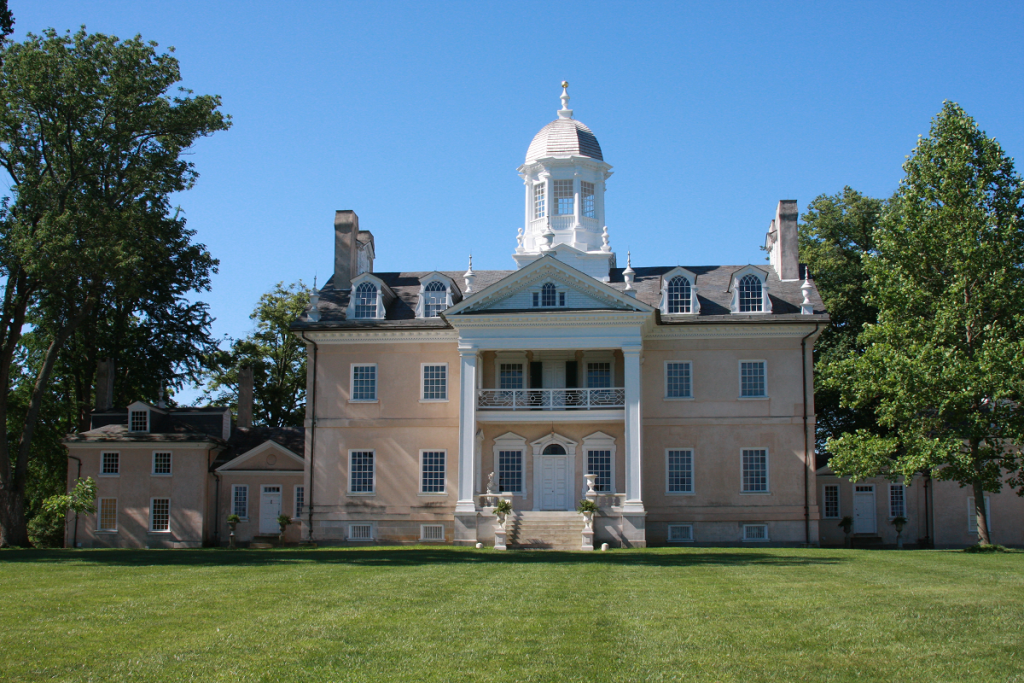June 5, 2022 @ 09:15 EDT
Site Visit #37
For around 14 years, I owned five acres of land in southeastern Ohio, where I eventually built a house for the family. I enjoyed my peaceful acreage until work took me to Iowa and I sold it.
Captain John Ridgely also owned some land north of Baltimore on which he built a house for his family. That’s where any similarities end! His land amounted to 25,000 acres. I try to visualize that by remembering my 5 acres and repeating that image 5,000 times! I fail. It was a lot of land. On this land he also built a rather nice house which he called Hampton. My current house could fit inside his entry hall. No, I am not exagerating.
Ridgely made his fortune in the iron works business, primarily making pig iron. He sold to the Continental Army during the revolution, adding to his fortune. Of course, enslaving 350 humans to do the hard and dangerous work also contributed to that bottom line.
Captain Ridgely only enjoyed his mansion for a couple of years as he passed away only two years after its completion. With no male heirs (and we certainly can’t give such a place to a daughter), the land and business passed to a nephew. The nephew changed his last name to Ridgely and headed a line of five more generations of owners, well into the 1940s. Unfortunately, the iron business began to decline after the Civil War. Something about actually having to now pay the workers cut into that profit. Additionally, newer and more efficient methods of making iron and steel were rendering the nearly 80-year-old works obsolete.

Initially, the Ridgleys sold parcels of land in order to afford the upkeep on the house. By the late 1940s, even that was not enough and the Ridgely family finally sold the house and land to the National Park Service, establishing Hampton National Historic Site. An interesting tidbit passed along by the park ranger: while the house was being built, John Ridgely lived a short distance away in a small house on his land, where he could see the large house. When Ridgelys sold the house in the 1940s, that original small house still stood (and does to this day). The family moved into that house completing the circle, so to speak.
The park has a small Visitor’s Center just below the mansion. Here, one can get free tickets for a tour of the house, which I did. The house itself is one of the largest ever built in the U.S. and the tour covered the downstairs rooms. Each room was furnished with fine furniture and expensive accessories, along with lots of art, both paintings and things like vases.
After the tour, I walked around the outside. Most of the original outbuildings are gone, and many that are there are restored or recreated. There is even a special greenhouse where they were able to grow oranges year-round. Down the hill from the back of the house are some splendid gardens for those into flowers and such.
There were a few other tours offered throughout the day, including one of the gardens and one of the farm areas. They were later in the day and I chose not to stay around for them.
The house was certainly impressive and the interior quite beautiful. Looking back at my small land and house, I can at least say that I either personally worked on building it, or paid workers a fair amount to build it. That’s more that can be said for the Ridgelys.
Steve